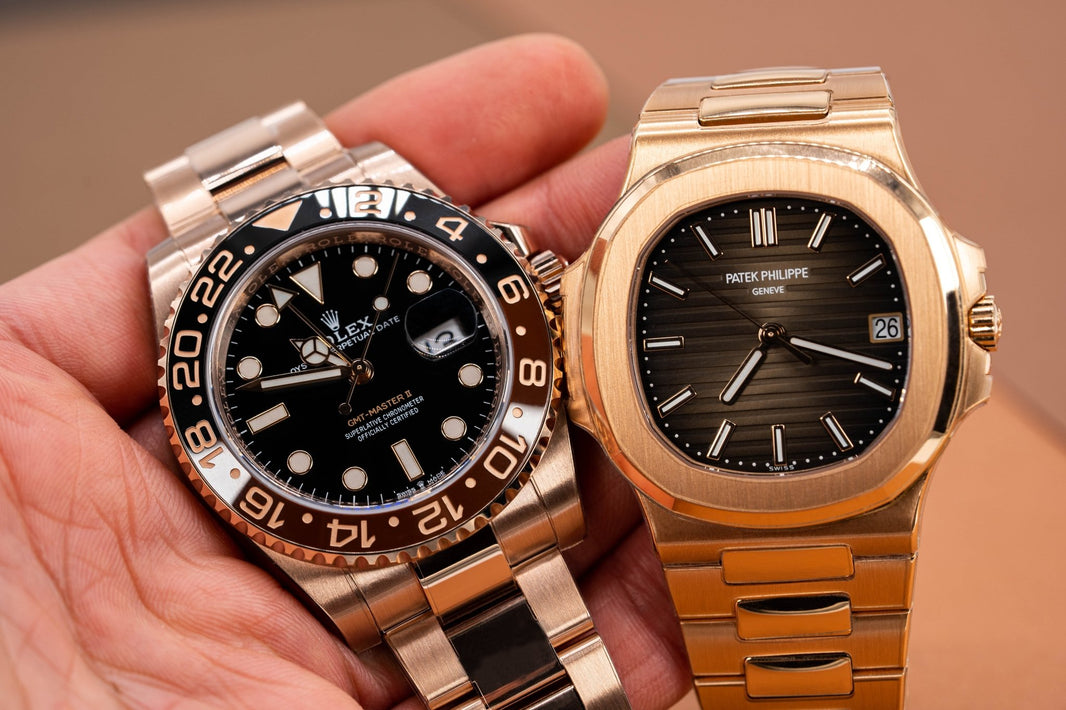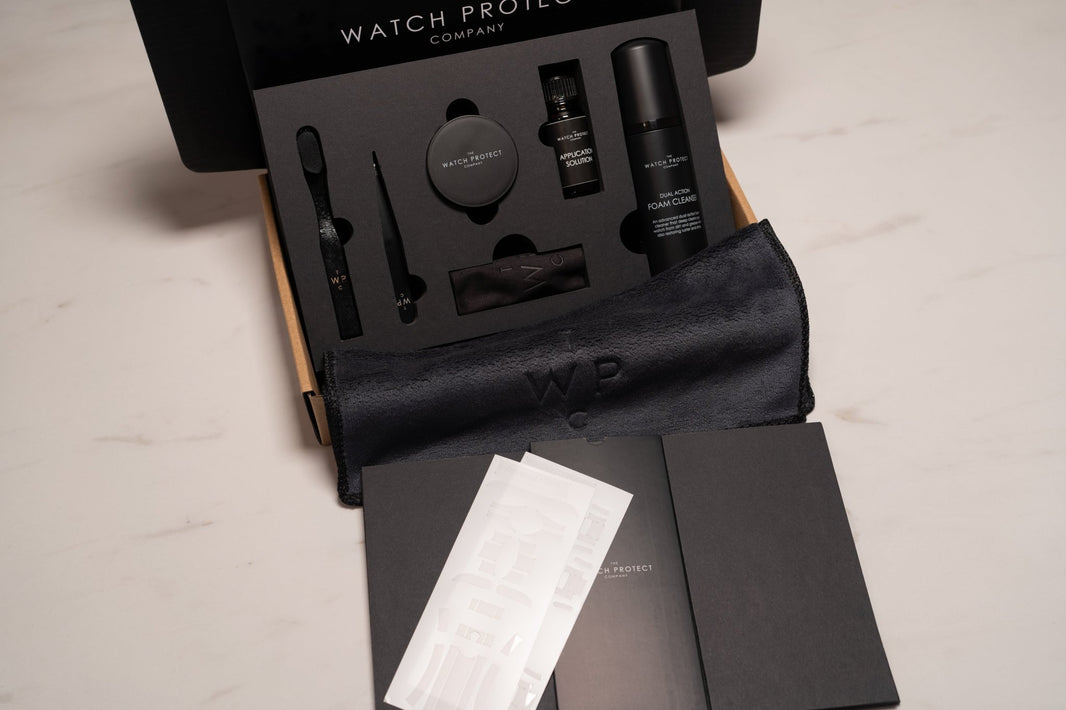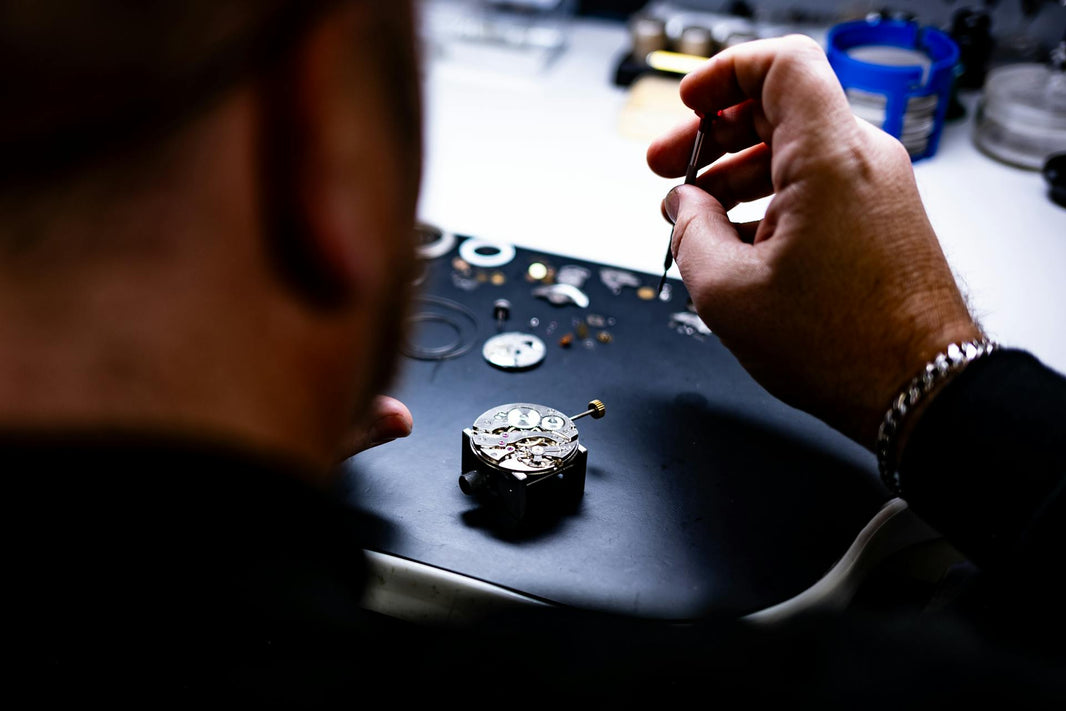Few design shifts in watchmaking have left as lasting an impression as the integrated bracelet watch. When Gérald Genta sketched the Audemars Piguet Royal Oak in 1972, and later the Patek Philippe Nautilus in 1976, he changed the perception of what a luxury watch could be. Steel became prestigious. Slim sport-chic silhouettes became desirable. And most importantly, the bracelet and case became one seamless expression of design.
But as with many icons, the integrated bracelet watch wasn’t always celebrated. After its initial heyday, the style slipped into the shadows—only to resurface decades later as one of the most sought-after categories in modern collecting.
A Bold Beginning in the 1970s
The Royal Oak and Nautilus were revolutionary: luxury priced, steel-cased, and unapologetically different from traditional dress watches of the time. Their integrated bracelets blurred the line between form and function, turning the watch into a single sculptural object rather than a case with an accessory strap.
Other brands soon followed. Vacheron Constantin introduced the 222 (the forerunner to today’s Overseas), IWC leaned into slim bracelet designs, and Girard-Perregaux experimented with similar aesthetics. By the late ’70s and early ’80s, the integrated bracelet had become synonymous with cutting-edge luxury.
The Fall Out: 1990s to 2000s
As the watch world entered the 1990s, tastes began to change. Collectors and consumers leaned heavily toward:
-
Chunkier tool watches and divers — Panerai, Rolex Submariner, and Omega Seamaster captured the spotlight.
-
Oversized statement pieces — By the 2000s, Hublot’s Big Bang and other bulky designs defined the era.
-
Return to traditional luxury — Gold dress watches and complications regained prestige.
Against this backdrop, integrated bracelet watches looked dated. Their slim profiles and angular lines felt “too ’70s,” and secondary market values softened. For nearly two decades, many models languished under appreciated, often trading for a fraction of today’s prices.
The Resurgence: 2010s to Today
From the mid-2010s onwards, the narrative shifted dramatically. Three forces led the comeback:
-
Vintage Revival
Collectors began to celebrate the ’70s and ’80s as fertile design decades. What once looked dated now appeared timeless. -
Genta’s Legacy
With renewed interest in Gérald Genta’s genius, his Royal Oak and Nautilus sketches were elevated to near-mythical status. -
Modern Reissues & New Entrants
Brands capitalised on the trend:-
Vacheron Constantin relaunched the Overseas.
-
Chopard introduced the Alpine Eagle.
-
Independent makers like Czapek released the Antarctique.
-
Even entry-level brands joined in—Tissot’s PRX became a runaway success.
-
Auction results skyrocketed. The Royal Oak and Nautilus became waitlist-only pieces, trading at multiples of retail. The integrated bracelet had not only returned—it was back on top.
Why They’re Back in Demand
Today, integrated bracelet watches embody a blend of:
-
Versatility – Sporty enough for casual wear, refined enough for formal settings.
-
Heritage – A direct link to the pioneering designs of the ’70s.
-
Scarcity & Exclusivity – Hype culture has made certain models near-impossible to obtain.
-
Design Purity – The case-to-bracelet flow is considered one of the purest expressions of modern watch design.
Protecting the Icons
As any collector knows, integrated bracelets look incredible—but they’re also unforgiving. Polished center links, brushed surfaces, and sharp edges pick up scratches faster than leather-strapped counterparts. Once marked, the seamless aesthetic is hard to restore.
That’s where watch protection kits come in. Invisible, precision-cut films safeguard both the case and bracelet, keeping integrated watches pristine while preserving long-term value. After all, a design born in the ’70s and celebrated again today deserves protection for the decades to come.
Final Word
The story of integrated bracelet watches is one of bold innovation, temporary rejection, and ultimate redemption. From the Royal Oak to modern reissues, these designs have proven that true icons never disappear—they simply wait for the world to catch up again.
And for collectors living in the middle of this resurgence, one thing is clear: if you own an integrated bracelet watch, it’s not just a timepiece. It’s history on the wrist—worth celebrating, and worth protecting.






